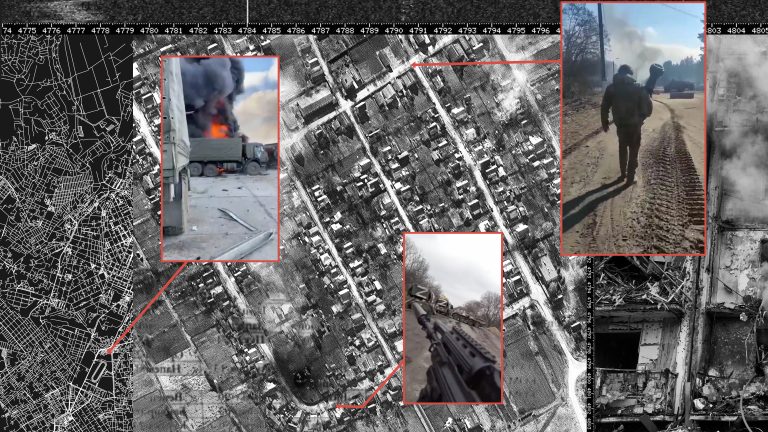There are many ways open-source information can help us understand how the crisis in Ukraine is escalating. Information from open sources can also be used to prosecute human rights violations and war crimes. Open-source intelligence describes the knowledge or understanding from the targeted collection, monitoring, and analysis of publicly available information, now mainly on the Internet, using specialized methods and tools.
Open-source intelligence is rooted in the context of intelligence. Indeed, it is more valuable than ever to national intelligence efforts today. Although it is no longer tied exclusively to the intelligence community. This open-source approach to intelligence xnxx offers the means to collect and query massive amounts of data at the speed of light. This is a valuable proposition given the dizzying pace at which the online information environment is expanding. However, this approach to open source information is not as accessible because it requires the skills and experience of computer scientists, statisticians, analysts, and subject matter experts.
Many experts are being part of the initiative
This approach is less readily available because it requires the skills of computer scientists, statisticians, engineers, analysts, and subject matter experts. Finally, the “exploratory approach” refers to how many people investigating aspects of the war in Ukraine approach their work. For someone with investigative skills like Justin Peden, trying to do the right thing means using your time and energy to analyze material posted online by Ukrainians. The reason is to document possible war crimes and confirm their exact location.
These people used open-source data to investigate and document the start of Vladimir Putin’s election war. A large and active group of digital detectives has been closely following the escalation of the crisis for several months now. Many journalists, researchers, and hobbyists are gaining huge followings online, shedding new light on Russia’s actions in Ukraine using freely available information. Faced with vehement denials from the Kremlin, the Bellingcat investigative team meticulously demonstrated Russia’s role in the 2014 downing of Malaysian Airlines Flight MH 17 over Ukraine using only a few photographs, satellite imagery, and elementary geometry.

The evidence is clear and un-surprising
Based on open-source evidence, primarily social media, the report links the Buk installation, photographed and filmed in eastern Ukraine on July 17, 2014, to the crash of Malaysia Airlines Flight 17. Bellingcat‘s investigative journalists have grown into an international group. Among their many achievements, they have discovered evidence that Syrian dictator Bashar al-Assad used chemical weapons against his own people and identified intelligence officials. Before the invasion, separatists used corpses to simulate IED Fabguys attacks, which Russian media used as evidence of atrocities in Ukraine. In addition, Russia accused Syrian dictator Bashar al-Assad of poisoning MI6 Service double agent Sergei Skripal and his daughter Yulia.
From humble beginnings, Eliot Higgins, founder of Bellingcat Investigative Journalism, was one of the first open-source intelligence researchers to gain widespread recognition. After Eliot Higgins began researching the use of weapons in civilian combat in Syria. When Bellingcat founder Eliot Higgins started his open source work, Higgins had no experience as an investigator or conflict expert. Nevertheless, he is now considered one of the world’s leading open-source researchers. Eliot Higgins, the founder of Bellingcats, was right when he described it as an “intelligence agency for the people.”

Disinformation is constantly being debunked by this technology
It is difficult to separate fact from fiction in the war for Ukraine. Online disinformation helps both sides shape the narrative. An old video from the West Bank plays a role in the war for Ukraine, and the Russian-Ukrainian conflict is not a big surprise. Open intelligence researchers have played a key role in debunking false claims and disinformation.
The more traditional media have also successfully integrated open-source intelligence techniques such as geolocation. Strategies like combining different sources of information to determine an exact geographic location into their investigative journalism. The area of intelligence activity for opening supplies includes countering disinformation. One of the unintended consequences of using open source intelligence services is that they give the US intelligence community the freedom to publicly discuss Russian intelligence operations without disclosing their sources or methods.
Analysts use different tools seeking truth
Columbia University’s Center for Digital Journalism, the Poynter Institute, and other journalism scholars recommend Bellingcat’s guide to open source investigations to journalists and journalism students. In addition, the Bellingcats achievements have spurred larger and more established media organizations (such as the New York Times Visual Tubegalore Investigation) human rights groups (Amnesty International Digital Verification Mission; forthcoming Human Rights Watch) to invest in open source research capabilities. ). OSINT Division), think tanks (Atlantic Council DFR Lab), and academic institutions (Berkeley Human Rights Research Laboratory).
Social media vetting tools and the investigators who use them, a field of forensics, can help. Bellingcat’s Beginner’s Guide to Social Media Inspection for Open Source Visual Forensic Analysis is a term for determining whether a video or image is real or accurately represented.
The aspiring open-source analyst needs to learn various tools and techniques to help refine search results and filter out irrelevant information. The open-source analyst uses tools and techniques to improve search results and eliminate irrelevant details. There are some helpful resources on the Bellingcat website.
